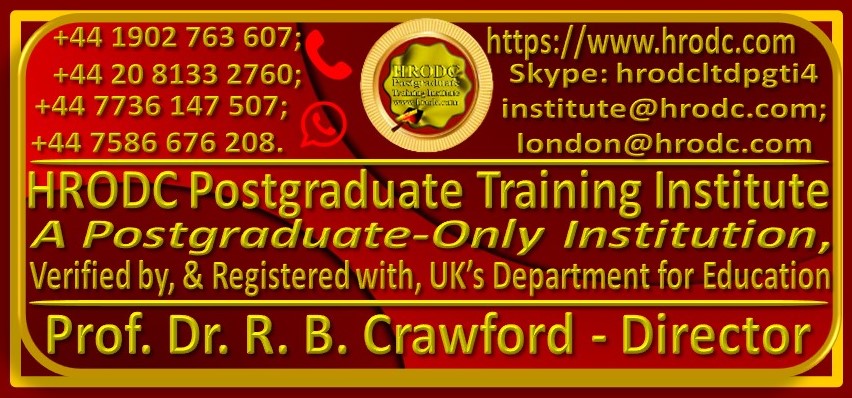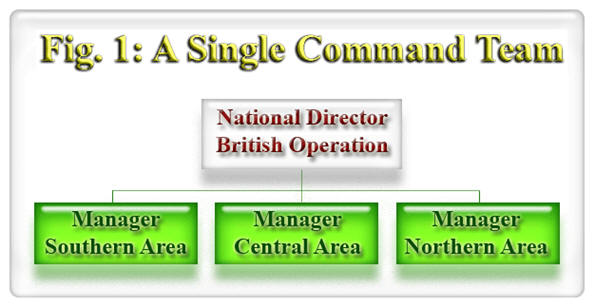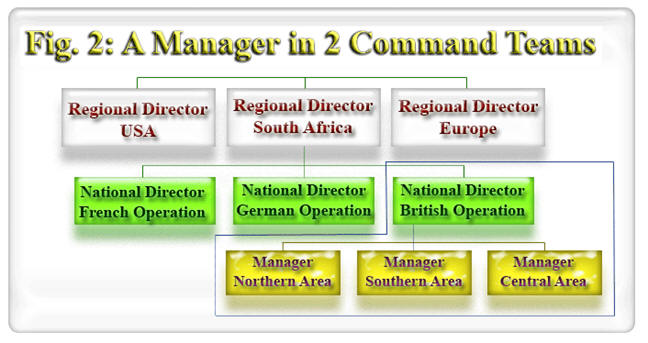Course
Co-ordinator:
Prof. Dr. R. B. Crawford is
Course
Coordinator. He is the Director of HRODC Postgraduate Training
Institute, A Postgraduate-Only Institution. He has the following
Qualifications and Affiliations:
Doctor of Philosophy {(PhD) {University College
London (UCL) - University of London)};
MEd Management (University of Bath);
Postgraduate (Advanced) Diploma Science Teacher
Ed. (University of Bristol);
Postgraduate Certificate in Information Systems
(University of West London, formerly Thames Valley University);
Diploma in Doctoral Research Supervision,
(University of Wolverhampton);
Teaching Certificate;
Fellow of the Institute of Management
Specialists;
Human Resources Specialist, of the Institute of
Management Specialists;
Member of the Asian Academy of Management (MAAM);
Member of the International Society of Gesture
Studies (MISGS);
Member of the Standing Council for Organisational
Symbolism (MSCOS);
Member of ResearchGate;
Executive Member of Academy of Management (AOM).
There, his contribution incorporates the judging of
competitions, review of journal articles, and guiding the
development of conference papers. He also contributes to the
Disciplines of:
Human Resources;
Organization and Management Theory;
Organization Development and Change;
Research Methods;
Conflict Management;
Organizational Behavior;
Management Consulting;
Gender & Diversity in Organizations; and
Critical Management Studies.
Professor Dr. Crawford has been an Academic in
the following UK Universities:
University of London (Royal Holloway), as
Research Tutor;
University of Greenwich (Business School), as
Senior Lecturer (Associate Professor), in Organisational
Behaviour and Human Resource Management;
University of Wolverhampton, (Wolverhampton
Business School), as Senior Lecturer (Associate Professor), in
Organisational Behaviour and Human Resource Management;
London Southbank University (Business School), as
Lecturer and Unit Leader.
His responsibilities in these roles included:
Doctoral Research Supervisor;
Admissions Tutor;
Postgraduate and Undergraduate Dissertation
Supervisor;
Programme Leader;
Personal Tutor.
For Whom This Course is Designed
This Course is Designed For:
-
Business Development Experts;
-
Corporate Directors;
-
Divisional Managers;
-
Entrepreneurs;
-
Human Resource Development Managers;
-
Human Resource Management Managers;
-
Line Managers;
-
Management Consultants;
-
Management Development Directors;
-
Organisational Leaders;
-
Performance Consultants;
-
Project Team Leaders;
-
Senior Executives and Managers;
-
Senior Leaders who oversee the activities of teams;
-
Specialist Team Leaders;
-
Talent Managers;
-
Team Development Personnel;
-
Team Leaders;
-
Team members themselves;
-
Team Supervisors;
-
Training and Development Managers;
-
Training Directors;
-
Transaction Analysts;
-
All others who are desirous in enhancing their expertise in team
formation, team development, team behaviour, resonation control,
transactional analysis and other salient aspects of team dynamics.
Duration:
6 Days
Cost: £6,000.00 Per
Delegate
The course cost does not include living accommodation. However, delegates are
treated with the following:
-
Free Continuous
snacks throughout the Event Days;
-
Free Hot Lunch on
Event Days;
-
Free City
Tour;
-
Free
Stationery;
-
Free On-site
Internet Access;
-
HRODC Postgraduate
Training Institute’s Diploma – Postgraduate; or
-
Certificate of
Attendance and Participation – if unsuccessful on resit.
HRODC Postgraduate Training Institute’s Complimentary Products include:
-
HRODC Postgraduate
Training Institute’s
Leather Conference Folder;
-
HRODC Postgraduate
Training Institute’s
Leather Conference Ring Binder/
Writing Pad;
-
HRODC Postgraduate
Training Institute’s
Key Ring/ Chain;
-
HRODC Postgraduate
Training Institute’s
Leather Conference (Computer –
Phone) Bag
– Black or Brown;
-
HRODC Postgraduate
Training Institute’s
8GB USB Flash Memory Drive,
with Course/ Programme Material;
-
HRODC Postgraduate
Training Institute’s Metal Pen;
-
HRODC Postgraduate Training Institute’s
Polo Shirt.
Location: Central London and International Locations
Daily Schedule:
9:30 to 4:30 pm.
Course Objectives
By the conclusion of the
specified learning and development activities, delegates will be able
to:
-
Distinguish between groups and mere aggregations;
-
Suggest the difference in interpretation of groups and teams;
-
Demonstrate your understanding of the social and psychological
relevance of the stages of formation of a group;
-
Distinguish between task forces, committees, command groups and
boards
-
Apply group dynamics to organisational settings;
-
Suggest ways of improving group morale, while enhancing their
effectiveness
-
Demonstrate a heightened understanding of the type and permanence of
the leadership of a team;
-
Explain the occasions in which a situational leader is likely to
emerge;
-
Demonstrate a high level of understanding of a team attempts to
replace a situational leader, to enhance stability, acceptability or
renewed or clarified mission or objectives;
-
Determine why a temporary team is likely to be more problematic to
lead than a permanent team;
-
Explain why a team’s disbandment might have a negative psychological
effect on members and the team leader;
-
Explain the bases for the feeling of ‘Togetherness’ or ‘Awareness’
IN An Aggregation;
-
Demonstrate their understanding of the theoretical and practice
bases of
Team Dynamics;
-
Explain the Team Typological Bases;
-
Distinguish between command teams, boards, committees and task
forces;
-
Provide examples of command teams, highlighting the situations in
which a leader might belong to two Command Teams;
-
Distinguish between Temporary Committees and Standing Committees;
-
Order the team formation stages, explaining the psychological issues
that beset them and relate them to organisational functioning;
-
Demonstrate their ability to deal with the psychological effect of
disbandment;
-
Detect Dysfunctional Behaviours;
-
Address the salient issues associated with Dysfunctional Behaviours;
-
Provide an individually synthesized proposal for dealing with
aggressiveness;
-
Indicate how they would handle blocking, effectively;
-
Propose an effective way of dealing with interfering behaviour;
-
Demonstrate the effectiveness of the strategy that they have devised
for dealing with intra-team competition;
-
Evaluate the effectiveness of their strategy for addressing
situations where team members seek sympathy;
-
Propose an effective remedy to ‘member withdrawal’;
-
Put forward a satisfactory way of addressing ‘special pleading’;
-
Demonstrate an effective ‘leader behaviour’ when dealing with
dysfunctional behaviours;
-
Exhibit tact in discouraging team member distracting behaviours;
-
Provide examples
of how a leader should encourage desirable behaviours in a team;
-
Indicate the range of tangible rewards that might be utilised in a
team;
-
Propose suitable intangible rewards that might be applied to a team
situation;
-
Apply appropriate rewards and, or, punishment that are applied to a
given team situation – thereby promoting team ‘functionality’;
-
Demonstrate an awareness of their ‘Team Building and Maintenance
Roles’ that will improve team effectiveness;
-
Indicate the steps that they will take to harmonising their teams;
-
Establish a basis for standard setting in their teams;
-
Demonstrate their understanding of the importance of Gatekeeping in
team formal settings;
-
Determine the optimum team size for effective functioning;
-
Demonstrate their ability to manage conflict effectively,
incorporating the occasions when it should be encouraged;
-
Outline the steps that they will take to avert groupthink and
promote teamthink;
-
Demonstrate their understanding of the ‘risky shift syndrome’,
outlining the steps that they will take to avert them;
-
Demonstrate their ability to employ transactional analysis in a team
context;
-
Internalise the dysfunctional effect of ‘resonation’ in a team
context;
-
Suggest how they might employ an effective diversity management that
discourages resonation;
-
Demonstrate their grasp of the fundamentals of performance
management;
-
Illustrate how they might resolve interpersonal problems among team
members;
-
Indicate how they will help team members to channel their energies
into task performance, establishing realistic goals;
-
Develop effective communication strategies that might be applied to
team settings, minimising technical language;
-
Clarify roles in team settings;
-
Provide a basis for team standard setting - establishing standards
and evaluating progress;
-
Illustrate how they will determine the contribution of each team
member to team goal accomplishment;
-
Recognise and acknowledge performance improvement in teams;
-
Indicate how they will reward exceptional performance in their
teams;
-
Indicate how they will establishing key competencies in teams;
-
Suggest how to establish acceptable performance levels in teams,
noting performance indicators;
-
Propose standards of measuring competence in teams;
-
Suggest how to determine which individual members of a team can
improve their performance – and subsequently, their contribution to
the team as a way of harnessing team synergy;
-
Illustrate how they will enhance the issue of ‘gatekeeping’ to
ensure that team members, in general, participate in team meetings,
extending support to the weak, ensuring that introverted team
members are not intimidated or ‘crushed’ by the extroverted;
-
Recognise the ineloquent team members;
-
-
Information, who might, nevertheless, be able to perform evaluative
role;
-
Resonation as an issue in team effectiveness;
-
Indicate how they will recognise resonation
in their teams, outline the steps that they will take to avert or
reduce its occurrence, outlining how they will ‘cautioning’
resonators;
-
Suggest ways to counteract the effect of the informal hierarchy - in
teams other than command teams;
-
Demonstrate their appreciation of the fact that workers belong to
different classes, in society;
-
Demonstrate an understanding of the notion that societal
socio-economic hierarchy might be informally represented in teams;
-
Provide an indication of their awareness of the fact that team
members’ class consciousness might relate to the positions that they
occupy in the organisation or society;
-
Exhibit a knowledge of the intimidating effect that class might have
on team members, and, hence, the leader’s responsibility to ensure
that this informal hierarchy is dispensed with in the promotion of a
‘classless team’;
-
Describe the effort that they will make to enhance the ‘critical
faculty’ of their team; and
-
Demonstrate their
awareness of the value of team cohesiveness and team solidarity, and
the dangers of over-cohesiveness.
Course Contents, Concepts and Issues
Part 1: Salient Team Dynamic Issues
-
Groups and Aggregations: Points of Distinction;
-
The Type and Permanence of the Leadership of a Team;
-
When Does a Situational Leader Emerge?
-
How Does the Team Attempts to Replace a Situational Leader, Enhance
Stability, Acceptability or Renewed or Clarified Mission or
Objectives?
-
Why Does a
Temporary Team More Problematic to Lead Than a Permanent Team?
-
Why Does Team
Disbandment Have a Negative Psychological Effect On Members and
Leader?
-
An Aggregation -
‘Togetherness’ or ‘Awareness’?
-
Aggregation and
Interaction;
-
Team or Group: A
Definition and Distinction;
-
Team Dynamics.
Part 2: Team Typologies and Their Bases
-
Team Typologies;
-
Team Typological
Bases;
-
Command Team;
-
Committees;
-
Temporary
Committees;
-
Standing
Committees;
-
Task Forces;
-
Boards;
-
Command Teams and the Organisational Hierarchy;
-
Command Teams and the Organisational Functioning.
Part 3: Team Formation, Stage Significance and Task Implications
-
Team Formation;
-
Team Formation Stage 1: Forming;
-
Team Formation Stage 2: Storming
-
How ‘True-To-Life’
or Realistic Are the Forming and Norming Stages of Team Development?
-
Team Formation Stage 3: Norming;
-
Team Formation Stage 4: Performing or Total Integration;
-
Team Formation Stage 5: Adjourning or Disbanding;
-
Deal with the
Psychological Effect of Disbandment.
Part 4: Effective Team Leadership (1)
-
Dysfunctional Behaviours;
-
Addressing Dysfunctional Behaviours;
-
Dealing with Aggressiveness;
-
Handling Blocking;
-
Dealing with Interfering Behaviour;
-
Dealing with Intra-Team Competition;
-
Addressing Situations Where Team Members Seek Sympathy;
-
Dealing with Member Withdrawal;
-
Addressing Special Pleading;
-
Leader Behaviour in Dealing with Dysfunctional Behaviours;
-
Being Tactful in Discouraging Distracting Behaviours;
-
Encouraging Desirable Behaviours;
-
Using Tangible Rewards;
-
Using Intangible Rewards;
-
Being Mindful of Team Situation;
-
Applying Appropriate Rewards and, or, Punishment;
-
Promoting Team Functionality.
Part 5: Effective Team Leadership (2)
-
Team Building and Maintenance Roles: Improving Team Effectiveness;
-
Encouraging Members;
-
Harmonising;
-
Standard Setting;
-
Gatekeeping;
-
Determining the Optimum Team Size;
-
Providing Team Incentives;
-
Encouraging Conflict;
-
Averting Groupthink;
-
Avoiding the Risky Shift Syndrome;
-
Employing Transactional Analysis;
-
Employing Effective Diversity Management and Discouraging
Resonation;
-
Encouraging Members;
-
Harmonising Team.
Part 6: Enhancing Team
Performance (1)
-
Performance Management;
-
Solving Interpersonal Problems among Team Members;
-
Helping Team Members to Channel Their Energies into Task Performance
Establishing Realistic Goals;
-
Developing Effective Communication Strategies;
-
Minimising Technical Language
-
Clarifying Roles;
-
Standard Setting - Establishing Standards and Evaluating Progress;
-
A Determination of the Contribution of Each Team Member to Goal
Accomplishment;
-
Recognising and Acknowledging Performance Improvement;
-
Rewarding Exceptional Performance;
-
Establishing Key Competencies.
Part 7: Enhancing Team
Performance (2)
-
Establishing Acceptable Performance Levels;
-
Noting Performance Indicators;
-
Measuring Competence;
-
Which Individual Members Can Improve Their Performance – and
Subsequently, Their Contribution to the Team as A Whole;
-
Harnessing Team Synergy;
-
Gatekeeping;
-
Making It Possible For Others to Participate;
-
Supporting the Weak;
-
Ensuring That
Introverted Team Members Are Not Intimidated or ‘Crushed’ By the
Extroverted;
-
Recognising the Ineloquent Team Members
-
-
Information to Perform Evaluative Role
Part 8: Addressing
Resonation and Issues Associated with Transactional Analysis
-
Resonation as an Issue in Team Effectiveness;
-
Recognising Resonation;
-
Taking Steps to Avert or Reduce Resonation;
-
‘Cautioning’ Resonators;
-
Determining the Optimum Team Size;
-
Numbers That Are Best for the Operational Effectiveness of a Team –
-
Team Constitutional Contingent Factors
-
Team Numbers and Member
Interaction;
-
Team Leader’s
Direct Communication with Them
-
Members and the Intervening Factors;
-
Team Communication as Interaction;
-
Necessity of Communication Reciprocation within Teams;
-
Team Transaction;
-
Team Transitional Analysis;
-
The ‘Child’ In the Team;
-
The ‘Adult’ In the Team;
-
The ‘Parent’ In the Team;
-
The Team Leader as a Transaction Analyst.
Some Locations of HRODC Postgraduate
Training Institute's Seminars or Public Courses
These seminars
or courses are scheduled to be delivered in international locations including Munich Germany, Durban South Africa, Johannesburg South Africa, Malta, Hong Kong, Muscat Oman, Kuwait City Kuwait, Brunei Darussalam, Kuala Lumpur Malaysia, Lagos Nigeria, Abuja Nigeria, Manila Philippines,
Kathmandu Nepal, Mumbai India, Damascus Syria, Port Louis Mauritius, Jeddah, Saudi Arabia, Riyadh Saudi Arabia, Dubai UAE, United Arab Emirates, Paris France, Rome Italy, Athens Greece, Albania, Kazakhstan, Tajikistan, St. Petersburg Russia, Toronto Canada, New York USA, Caracas Venezuela, Algiers Algeria, Cairo Egypt, Kingston Jamaica, Tripoli Libya, Harare Zimbabwe, Brussels Belgium, Monrovia Liberia, Tamilnadu India, Nairobi, Kenya.
|


















